History of Optical Animation
In 1832, Belgian physicist Joseph Plateau (1801-1883) discovered the mechanism by which pictures and shapes drawn on a disc appear to move when the disc is spun. This device was called the Phenakistiscope1 and is said to be the origin of movie projector and animation. In Japan, the animation artist Furukawa Taku later gave this device the name “odoroki-ban,” which means “surprising disc” in Japanese.
The distinctive characteristic of this device is that the pictures and shapes on the disc are drawn so they change little by little. The shapes don't appear to move when viewing the spinning disk straight on, but what happens when the disc is viewed through a tiny slit? The stationary images seem to move, marking the birth of animation. This effect is made possible by the device in combination with the visual illusion known as “persistence of vision.”2
The Phenakistiscope and other optical animation devices enjoyed widespread popularity as toys in 19th-century Europe. People enjoyed various kinds of images with the sets that were made available. Today the Zoetrope is the best-known example from the many 19th-century animation devices that made images appear to move through rotation.
- 1 Phenakistiscope
- This word was created through combining the Greek word “to trick” with “scope,” which refers to visual devices.
- 2 Persistence of vision
- This option illusion happens when an image or motion remains visible even after the light has ceased to reach the eye.
From the Collection of the Tokyo Photographic Museum
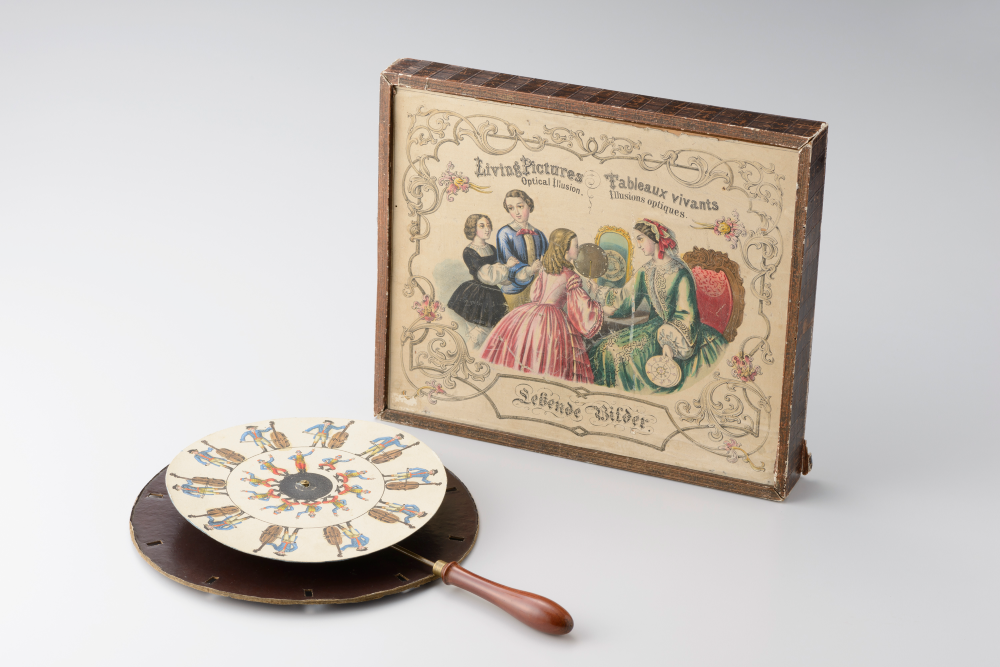
Phenakistiscope
Optical animation device in which viewers watch images drawn on a single disc, which are reflected in a mirror.
Collection of the Tokyo Photographic Art Museum,
19th Century
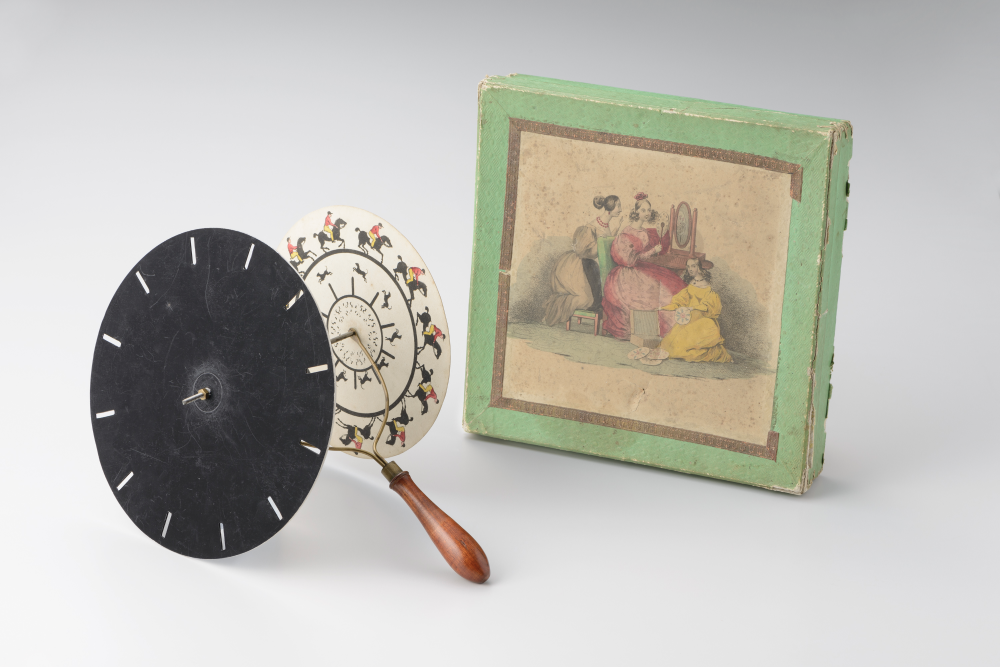
Heliocinegraph
Using a black disc with slits and another disc with images, the images appear to move without using a mirror.
Collection of the Tokyo Photographic Art Museum,
19th Century
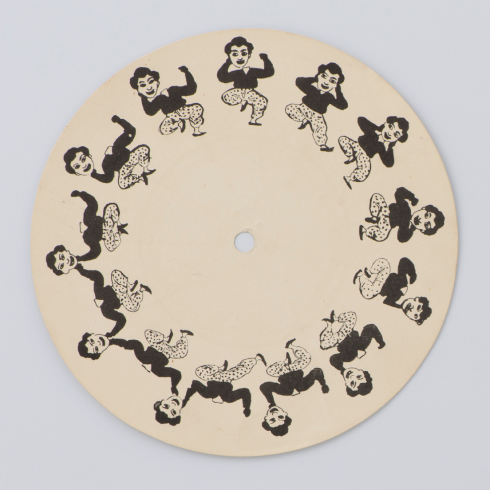








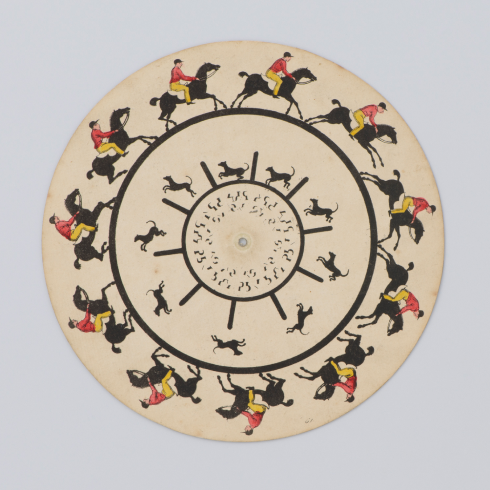


Images in 19th Century Optical Animation
Optical animation from the 19th century has lots of ideas that effectively convey the fun of animation, including people and animals doing fun movements and combining different shapes! Many of the works separated the center and outer parts of the disc to create separate layers. Back then people enjoyed animation by using these discs featuring varied images with Phenakistiscope and Heliocinegraph devices.
Collection of the Tokyo Photographic Art Museum,
19th Century
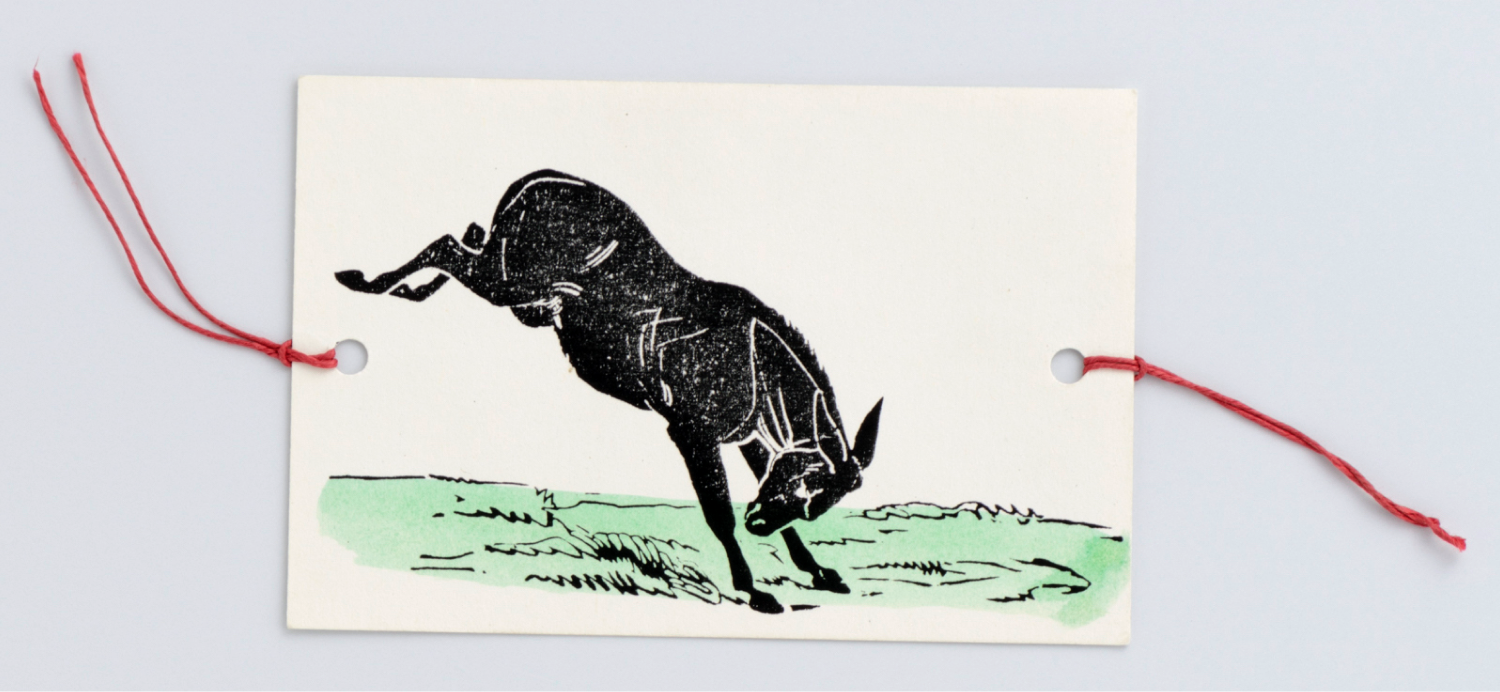


Thaumatrope
This invention predates the Phenakistiscope. Pictures on the front and back of a single card are rotated quickly to make the images seem to overlap and move.
Collection of the Tokyo Photographic Art Museum,
19th Century
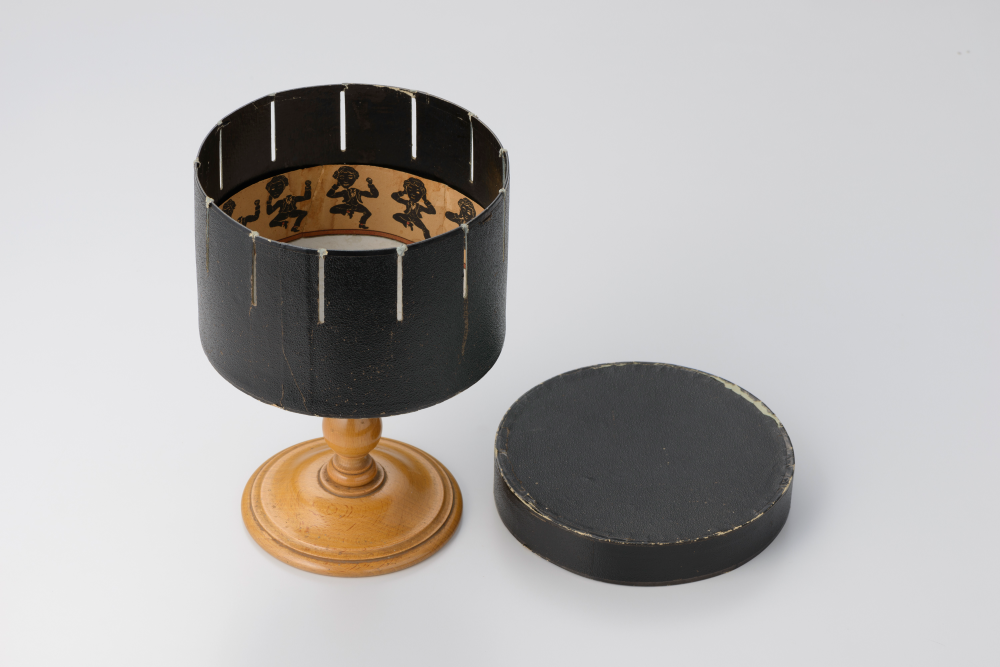
Zoetrope
Animation appears when you peer through slits in a rotating cylinder that has images drawn on the inside surface. This device can be used by more than one person at a time.
Collection of the Tokyo Photographic Art Museum,
19th Century